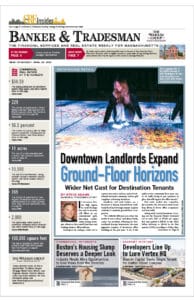Prolonged high interest rates may drive credit risk at banks with high commercial real estate exposures, according to a new survey by Moody’s.
Moody’s previous survey of U.S. banks’ CRE concentrations in September 2023 highlighted the growing asset risk in CRE loan portfolios and increased likelihood of credit losses for banks. Higher interest rates, as well as structural shifts in demand, increased borrowers’ debt service obligations while increasing cap rates, putting pressure on loan performance and the ability to refinance, Moody’s said.
The new survey shows some improvement from September 2023 in banks’ amount of exposure to CRE loans with riskier attributes relative to tangible common equity (TCE).
Portfolio-level survey data shows that for the median U.S. bank respondent, commercial office loans account for 17 percent of TCE and construction loans 24 percent of TCE, down from 26 percent and 30 percent respectively, in the September 2023 survey. According to Moody’s this improvement can mostly be attributed to the median bank retaining more capital, though banks are also reducing their exposures to office and construction loans.
Still, CRE concentrations remain a credit risk for many US regional banks, Moody’s said.
The survey shows that many U.S. banks have a large proportion of CRE loans maturing through the end of 2025, equal to 63 percent of TCE for the median bank. Since these loans will be maturing under increased interest rates, stricter underwriting standards and depressed valuations, this makes it harder for borrowers to refinance or secure new loans, Moody’s said.
Federal Reserve Chair Jerome Powell indicated in testimony to Congress Tuesday that the central bank is moving closer to cutting its benchmark interest rate. However, the scale of such cuts are unknown and a survey of senior Fed officials last month indicated only one rate cut could be in the offing for 2024.
Many regional banks are proactively addressing these issues by collaborating with borrowers to restructure or resolve problem loans, Moody’s said. Distressed loans will likely require a valuation reset, in which borrowers will inject additional equity or hand over the property to the bank, the consultancy said..
In some cases, Moody’s said that banks are choosing to modify the loan terms by lowering the interest rate or extending the maturing to allow borrowers to continue supporting the loan and avoid challenges with repossession.
However, this may lead to larger losses down the line, Moody’s said.
Excess office space due to the rise of work-from-home culture is lowering market leasing rates, reducing rental income for commercial property owners and restricting cash flow, making it harder for borrowers to repay office loans, Moody’s said. If loan defaults rise significantly, banks bearing these loans could face substantial losses.
The survey by Moody’s analyzed detailed information on a sample of 41 U.S. banks’ largest CRE loans, including office loans, multifamily loans and non-office/non-multifamily loans. Moody’s looked at banks’ entire CRE portfolios and conducted loan-level analysis of the asset underwriting and provisioning for banks’ largest CRE loans.







